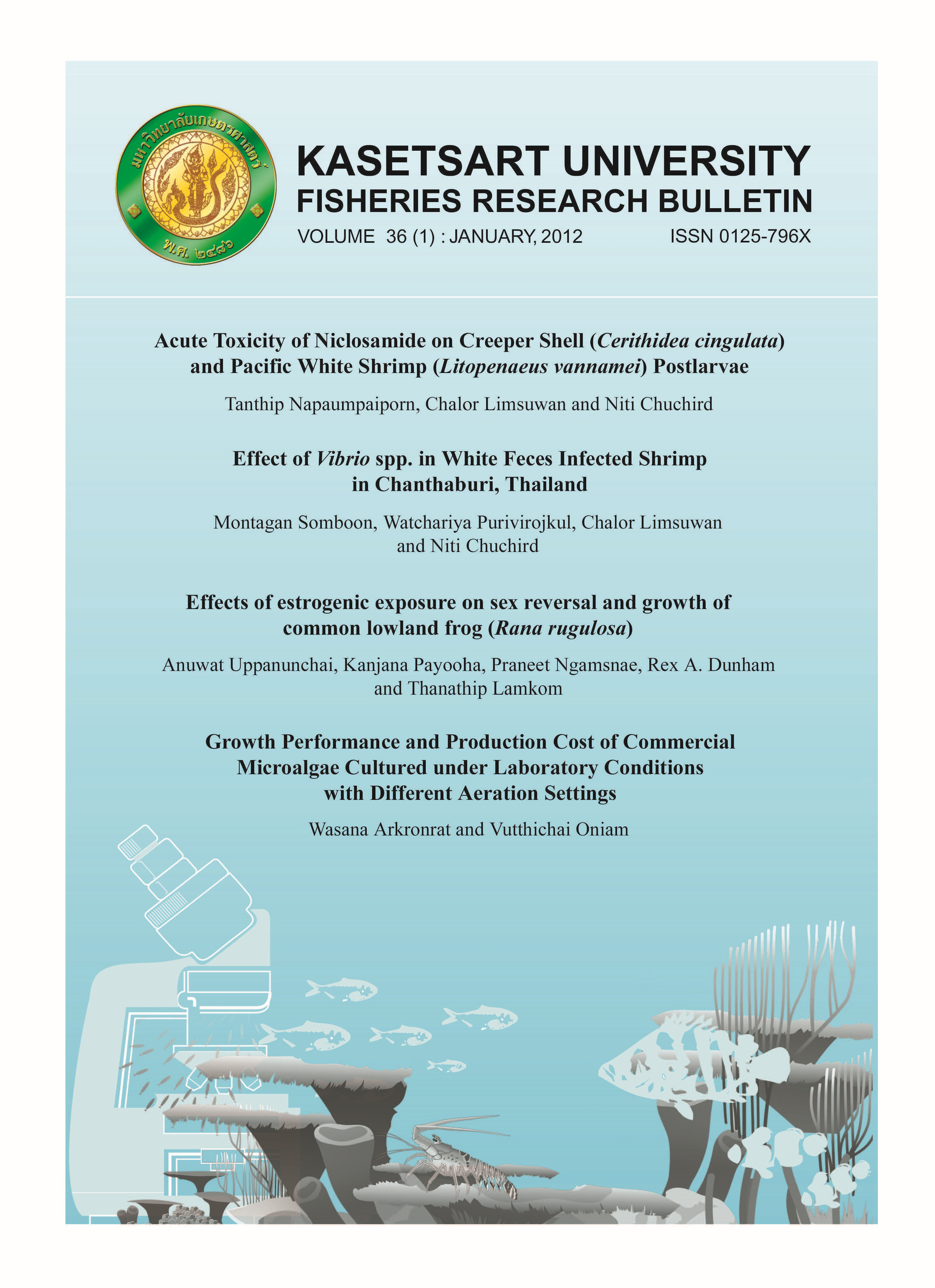Effects of Estrogenic Exposure on Sex Reversal and Growth of Common Lowland Frog (Rana rugulosa)
Main Article Content
Abstract
During metamorphosis, gonad differentiation may be sensitive to steroid disruption. The common lowland tadpoles (Rana rugulosa) were exposed to 17-estradiol (E2) at the nominal concentrations: 0 (control), 1, 10 and 100 µg/L by immersion, and 0 (control), 1, 10, and 100 mg/feed 1 kg by oral administration method until the end of metamorphosis. The gonad development sex-ratio and growth were determined at complete metamorphosis and 6 months old adults. The highest dose by immersion had a highly significant female biased sex ratio (74 %). Oral administration of E2 did not alter sex ratio. Histological studies showed gonad differentiation (normal ovaries, normal testis, and intersex) at 40 days. The lowest growth found in the 100 µg/L concentration may result from endocrine function in the reproductive or other systems. At 1 year old adults, disappearance of the oviduct and abnormal oviduct were found in adults in the highest concentration of E2 treatment. Females grew faster than males. When delivered by immersion, high doses of E2 stimulated growth of males.

